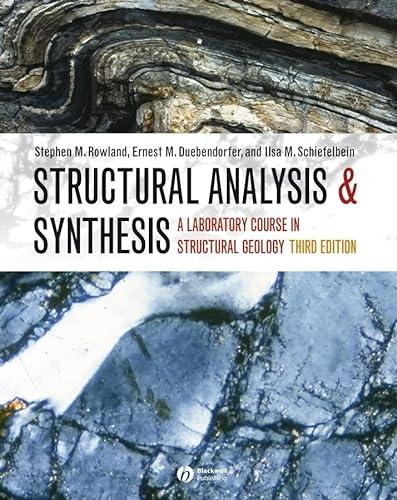Let us look more closely at the fault history within Field II of Fig. G-28. We will
Question:
Let us look more closely at the fault history within Field II of Fig. G-28. We will examine the detailed fault pattern of one small area at Hoover Dam on the Arizona–Nevada border, a highly controversial area within the Basin-and-Range province. The faults at Hoover Dam were studied by Angelier et al. (1985); Fig. G-29 is a schematic summary of their results. Although not all workers in the area would agree, Angelier et al. (1985) recognized four faulting episodes at Hoover Dam — two episodes of normal faulting and two episodes of strike-slip faulting. The first faulting episode (early normal faulting) is depicted in Fig. G-29a, and the second (early strikeslip faulting) is depicted in Fig. G-29b.
Fig. G-28
1. Draw the three principal stresses on Fig. G-29a and b that would account for each of these first two stages of faulting.
2. The early strike-slip stage was followed by a late normal-faulting stage, which was then followed by a late strike-slip stage. The end result is schematically shown in Fig. G-29c. Draw the three principal stresses on Fig. G-29c that would account for this late strike-slip stage of faulting.
3. Notice that in Fig. G-29b one of the strike-slip faults is left-lateral and the other is right-lateral. Notice also that one segment of the left-lateral fault is reactivated in Fig. G-29c with right-lateral motion. All of the faulting depicted in Fig. G-29 took place during Miocene regional extension, when the Basin-and-Range province developed in the Hoover Dam region. In the space provided near the bottom of Fig. G-29, explain how a strike-slip fault can change from sinistral to dextral during one tectonic episode.
4. The authors of this study attributed the alternation of normal and strike-slip faulting depicted in Fig. G-29 to ‘‘permutations of s1 and s2 [which] represent stress oscillations in time and space’’ (Angelier et al., 1985, p. 361). Bearing in mind that the Miocene was a time of active volcanism, crustal thinning, and high denudation rates in the Hoover Dam region, in the space provided at the bottom of Fig. G-29, speculate about the geologic factors that might have caused the vertical principal stress to increase and decrease in magnitude relative to the horizontal principal stresses.
Fig. G-29

Step by Step Answer:

Structural Analysis And Synthesis A Laboratory Course In Structural Geology
ISBN: 9781405116527
3rd Edition
Authors: Stephen M. Rowland, Ernest M. Duebendorfer, Ilsa M. Schiefelbein




